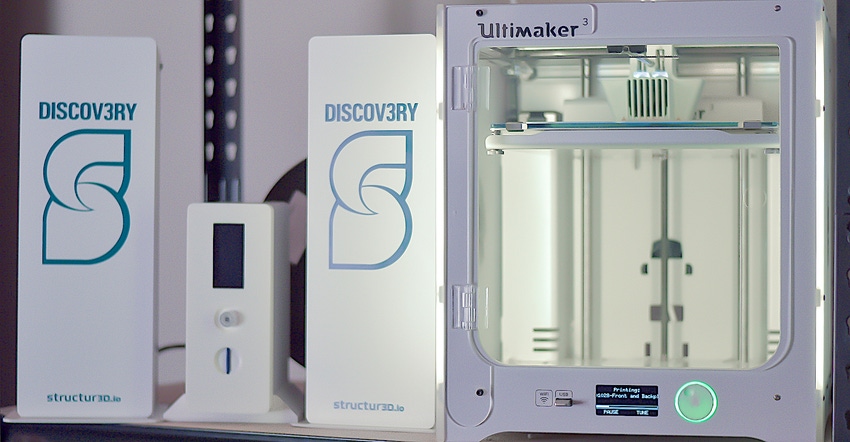The Inj3ctor 3D printer provides production using tens of thousands of factory-grade liquid rubber materials.

Soft elastomer rubber materials have seemingly been overlooked by the 3D printing industry. But Canadian startup Structur3d (pronounced “structured” with the “3” as an “e”) has introduced the Inj3ctor Platform, a new desktop solution for injection molding rubber parts. The company says its goal is to create new products with factory-grade rubber materials, like silicones and polyurethanes.
The ability to 3D print prototypes and actual products promises to save time and money while providing the potential for mass customization of products.
![]()
According to Structur3d, the Inj3ctor is the first 3D print system to combine the principles of injection molding with 3D printing. By using 3D-printed molds, the Inj3ctor employs material cartridges to mix and inject 2-component flexible materials to create any customizable shape. The result is production-quality products using factory-grade rubber materials, like silicones and polyurethanes, rather than prototypes made with more typical printer-friendly materials.
Regular 3D-printed rubbers don’t usually meet manufacturing standards, which has limited 3D printed rubbers to prototype applications. Structur3d’s Inj3ctor system combines desktop injection with 3D printing together to create a practical solution for manufacturing functional parts.
This provides a cost-effective alternative to traditional options such as hand casting molds or buying mass-production tooling. Structur3d is targeting automotive, industrial products, aerospace, academia, energy, and medical industries. Consumer goods where the buyer customizes some portion of the design, such as custom design in shoes, another possible application of the technology.
Structur3d co-founder and COO Andrew Finkle. |
“We saw a gap in the materials available, which was primarily limited to plastics and metals,” explained co-founder and COO Andrew Finkle. “We wanted to produce parts with silicones and polyurethanes.”
Their solution was to print molds and then inject those desired materials to create production-grade soft rubber parts. “The 3D printing of plastics and is already installed can be used to quickly make a mold and we can fill this mold using positive pressure and mixing materials as we inject.”
Those injected materials are typically a two-part material, and those components need to be mixed homogeneously before filling the cavity in the newly printed mold. Getting the two parts to mix correctly was one of Structur3d’s bigger engineering challenges,” reports Finkle “For the injector a lot of it comes down to the fluid mechanics,” he said. “We spent a lot of time on that.”
To use the Inject3r, product developers design a mold using their regular CAD software. Then, they 3D print that part using the normal durable or dissolvable plastic that they’d usually put in their printer. Then they can choose from tens of thousands of liquid rubber materials, customizing it based on desired durability, flexibility, and cure time and use this in the Inject3r. Based on the user-selected mixing ratio and injection volume, the Inj3ctor fills in the mold, creating a fully customized, flexible product.
Ford has worked with the University of Waterloo on some projects to study the Inject3r’s utility in car manufacturing. “Our device allows them to redesign parts to use materials that have not traditionally been able to be used,” Finkle noted.
The company is also targeting Tier 2 seating suppliers to develop production-ready foams that help provide heating and cooling capabilities in those seats, he said. “The next thing is large volume. Can this be scaled up to produce a seat cushion or armrest and use different foaming materials?”
Of course, Structur3d isn’t focused on the car industry and is working with biomedical device makers, manufacturers, and even toolmaker Stanley Black and Decker. “We see, in that professional design and engineering space, as this being a key tool,” Finkle said.
Structur3d’s Inj3ctor Platform Bundle includes the Inj3ctor, an Ultimaker S5 3D printer, materials for both, and additional accessories.
About the Author(s)
You May Also Like






